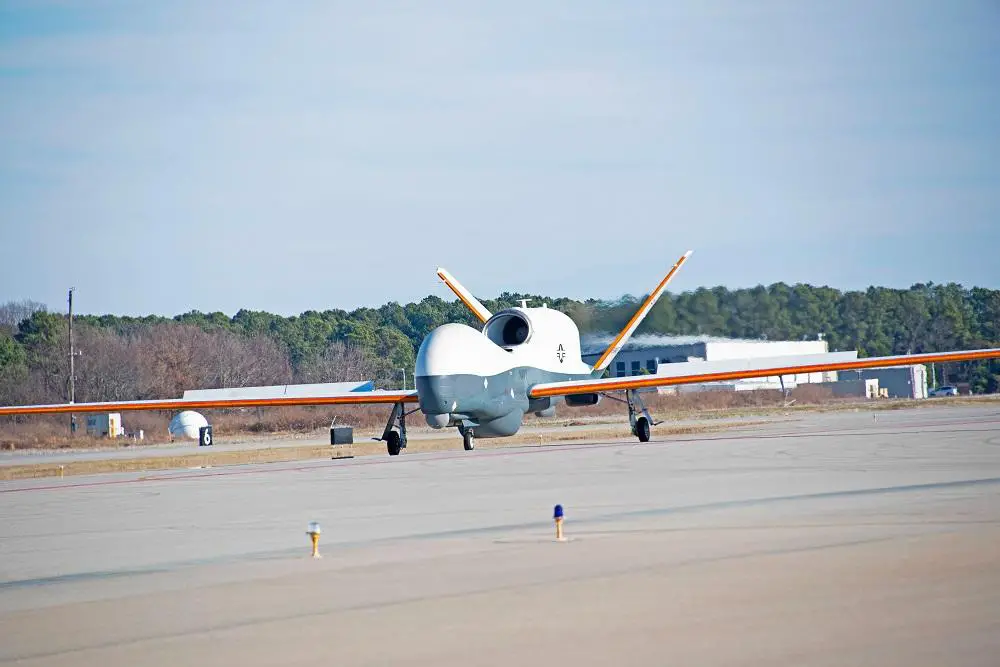The MQ-4C Triton test team conducted the first flight to assess the unmanned aircraft system’s ability to fly with wing ice accumulation Jan. 25 at Patuxent River. This was the first of approximately 15 flights planned through spring 2023 that will clear Triton to fly in icing conditions. In late 2022, the Integrated Test Team (ITT) installed 3D-printed nylon ice shape blocks designed to simulate ice accumulation on the wings and V-tail if the aircraft were to fly through moderate icing. The orange-colored ice shapes are coated with a coarse grit that makes them textured and rough like ice that accumulates on the inside of a freezer, said Amanda Marge, MQ-4C Triton lead test engineer.
“Triton’s ability to fly in icing conditions is a top priority for the fleet. The greater ability we have to fly in harsh weather conditions, the more capability we can provide to the fleet. The objective is to verify that there’s sufficient stability and control in order to remove the restrictions in the flight clearance for flying in icing conditions – which could significantly increase the fleet’s sortie rate. This timeline will support deployment of the latest MQ-4C multi-Iintelligence variant,” said Capt. Josh Guerre, MQ-4C Triton Program Manager.

During the initial flight, the team executed basic flying qualities maneuvers such as control surface pulses, sideslips, and sustained turns at 20,000 feet. The team will analyze data from the flight to confirm that the aircraft responds as predicted to inputs and that the team can safely proceed with further testing. As flights continue, the average planned duration for ice shape testing will increase to approximately five hours. Triton will fly with this simulated ice accumulation on the wings throughout points in the operational envelope to determine the impact on aircraft flying qualities and performance.
The Northrop Grumman MQ-4C Triton is an American high-altitude long endurance unmanned aerial vehicle (UAV) under development for the United States Navy as a surveillance aircraft. Together with its associated ground control station, it is an unmanned aircraft system (UAS). The MQ-4C Triton is a long endurance, high altitude UAS that provides up to 24 hours of flight time. It is currently conducting Intelligence, Surveillance, and Reconnaissance (ISR) missions overseas. Triton builds on elements of the RQ-4 Global Hawk; changes include reinforcements to the air frame and wing, de-icing systems, and lightning protection systems.















